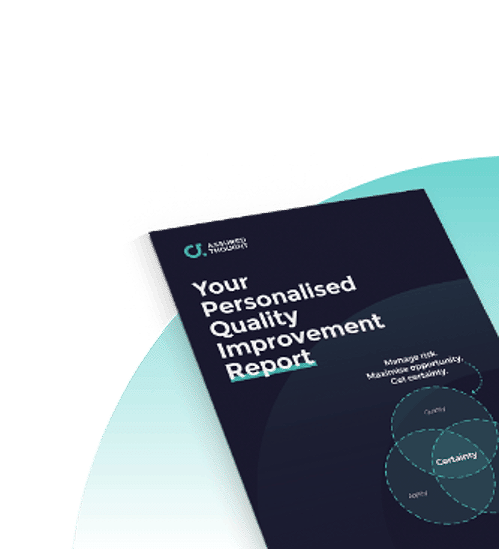Resource
Getting developers to think like testers: A tester's perspective
11 Apr 2025
The demand for higher-quality software is constantly increasing. Has the time come for developers to embrace 'outside' perspectives to help them meet that demand. In this month's blog, Laura Philbin, Assured Thought's Head of Operations, takes a look at the traditional relationship between developers and testers - and projects how that relationship might change to benefit software development. Last month, I took the opportunity to attend PeersCon25, an event that brought together some of the brightest minds in the software testing community. One keynote session particularly stood out for me: it explored how we, as testers, can encourage developers to adopt a testing mindset. It's a topic I predict will resonate deeply within the industry as demand for higher-quality software grows and grows.
The challenge: Developer mindset versus tester mindset
Traditionally, developers have focused on building features and functionality, while testers have looked at breaking those features to uncover hidden issues. Naturally, the two camps can sometimes feel they're working in opposition, one 'undermining' the work of the other, leading to friction.
The reality, of course, is that both roles are working towards increased software quality as a shared responsibility – so acknowledging this by actively fostering a quality testing mindset among developers shouldn’t be seen as such a reach. It could, after all, greatly enhance the robustness of a final product, which is what both camps have always worked towards in their own ways.
Key takeaways from the keynote
The keynote speaker shared practical ways to bridge the gap between developers and testers. Here are some of their key insights:
1. The shift-left mentality
Testing should be an integral part of the development lifecycle – not an afterthought. By embedding quality engineering ideals early in the development process, developers can catch defects themselves, reducing the cost and effort required to fix them at later stages.
2. Getting into developers’ shoes
One of the most effective ways to build a testing mindset among developers is for testers to actively step into the developer world. That might seem counter-intuitive, but testers learning about code, understanding development constraints and engaging in pair coding sessions are all helpful measures. Why? Because when testers experience the challenges developers face, they can provide more insightful feedback, making the testing process a collaborative effort rather than a separate function.
3. Encouraging exploratory testing
Developers often rely on automated unit tests, but they can benefit from exploratory testing techniques used by testers too. Encouraging developers to think beyond the happy path and consider edge cases, user behaviours and potential failures can lead to more resilient code.
4. Test-Driven Development (TDD) and Pair Testing
The adoption of TDD by developers ensures tests will be written before code, inherently making developers think about validation from the off. Additionally, pairing developers with testers for collaborative coding and testing sessions can help build a shared understanding of testing best practices. This hands-on approach can help developers and testers to foster deeper connections and mutual appreciation.
5. Appreciating developers' pain points
Testers understanding the pressures and constraints developers work under fosters empathy, creating an environment in which testers and developers can work towards a common goal. Instead of just highlighting issues, testers can then offer insights on how to address quality concerns in ways that better align with development priorities.
6. Mindset shift: Quality ownership
Quality is not just the responsibility of testers. In reality, it has always been a team effort – but not always fully acknowledged as such. Developers should be encouraged to openly take ownership of the quality of their code. This should include writing meaningful unit and integration tests, questioning assumptions and considering different user scenarios.
7. Use of real-world scenarios
A tester's perspective often includes real-world user behaviour that developers may not initially consider. Encouraging developers to simulate real-user interactions, performance constraints and accessibility needs will help ensure software is not just functional but also user friendly.
8. Creating a culture of collaboration
This was one of the most compelling points from the keynote: developers and testers are not opponents – they are allies in delivering high-quality software.
Fostering open communication between testers and developers through things like regular knowledge-sharing sessions, bug bashes and joint retrospectives creates a shared responsibility for quality. When testers and developers work together rather than in silos, the results are significantly better.
Quality-driven development
It makes sense that when testers take the time to understand development challenges and developers embrace a testing mindset in turn, the outcome should be a more cohesive, efficient and quality-driven development team.
For those of us in the testing community, the challenge is to continue to advocate for this necessary shift in the ‘typical’ or ‘traditional’ developer mindset.
The more we engage, educate and collaborate with developers, the closer we’ll get to achieving a culture in which quality is everyone's responsibility.




